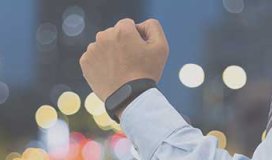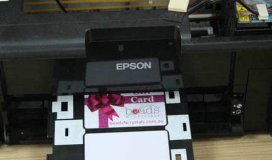In a little less than two months, Reveal Labs, the start-up behind the Tile—a small Bluetooth tag about the size of a matchbox—raised more than $2. 6 million in pre-orders. At $18. 95 apiece, that means at least 141, 493 tags have been spoken for so far. One could argue that's pretty impressive.
Started by software and hardware engineers Mike Farley and Nick Evans in 2012, Tile was incubated out of Silicon Valley mobile accelerator Tandem Entrepreneurs Management Services, with $200, 000 in funding. When Tile launched its crowdfunding initiative, it stated it was in search of $20, 000 to fund its device.
Raising $2. 6 million—for a tag that uses radio frequency to broadcast its existence to any nearby mobile device running the Tile app—is, in my opinion, nothing short of amazing. Many of you may remember it wasn't too terribly long ago (in early 2003) that Gillette attached RFID tags to its Mach 3 Turbo razor blades and shipped them to stores including Wal-Mart and the U. K. supermarket chain Tesco that were equipped with "smart shelves. " Those tests caused quite a stir, with protestors and privacy groups voicing concerns about the potential invasion of privacy that could result from having RFID tags permanently attached to products. Within a few months, Wal-Mart backed out of the item-level tagging tests and focused instead on tagging pallets in the supply chain.
It appears now, a decade later, people are much more comfortable with RFID technologies (and for that matter, with paying for them). That's not to say that people don't have concerns about privacy with regard to RFID, NFC and other auto-ID technologies. But thousands and thousands are ordering Tiles, and other, similar tags. For the record, the Tile founders insist that people's personal information is kept private and that Tiles are secure, stating on the Web site that only the Tile owner and the Tile users with which an owner has explicitly shared his or her Tiles can search for that owner's Tiles.
Tile says its tag is designed to help people find misplaced keys, wallets and other things. Using an accompanying iOS app, people will be able to manage and find multiple Tile tags (and presumably the items to which they are attached) located within a 100 to 150 foot radius. The app uses the Tile tag's signal to determine whether the user is getting closer or farther away from the tagged item. And just like the common practice of calling a misplaced mobile phone to find it, people can call their misplaced tile from the Tile app on their phone to make finding it easier (when pinged, the Tile tag rings). If out of range, the app's "Last Place Seen" feature shows where the item was, well, last seen.
Tile leverages the relatively new Bluetooth 4. 0 standard and its Bluetooth Low Energy (BLE) specification, which uses a technology that allows for periodic rather than continuous data transfer. That means the tag is often dormant and thus, has an operational battery life of about a year. The Tile tag is completely sealed, making it waterproof, and when a year is almost up (and the likelihood that the battery life is about up), the company will send customers a reminder to order a new Tile tag. Bluetooth LE technology operates in the 2. 4 GHz to 2. 4835 GHz ISM band, the same RF spectrum used by Classic Bluetooth technology, but employs a different set of channels.
Tile can help track down lost pets or stolen items; people can note in Tile app when a tag goes missing and is outside of the range of their iPhone or iPad. This alerts the entire network of devices running the Tile app to be on the lookout. If the missing tag comes within range of another mobile device running the Tile app, the missing tag can signal that device, and, according to the company, that device "discretely and securely" identifies the Tile tag and notifies its owner. No personal information is shared, nor is anyone except the missing tag's owner aware of the search and rescue event.
Reveal Labs isn't the first company to introduce such an active RFID tag that leverages Bluetooth LE technology. In fact, Sticknfind Technologies, founded by Jimmy Buchheim, already offers its sticker tag used to help people keep track of and find items like wallets or pets. About the size and thickness of a quarter, the Stick-N-Find tag leverages Bluetooth LE and has an accompany iOS app that shows users when they are getting close to the tag they are searching for. The Stick-n-Find uses a standard watch battery, which can be replaced, so the tags are reusable. The tag has a range of about 100 feet, and like the Tile app, the Stick-N-Find app can call the tag, causing it to light up and buzz. This Find It feature has options; different sounding alarms can be designated for different stickered items, according to the company. Another feature, Virtual Leash, turns on an alarm if a designated sticker moves outside of a selected approximate distance. Also like Tile, Stick-N-Find was launched with a crowdfunding initiative, and it has raised more than $931, 000 for the Stick-N-Find tag. The tags cost $49. 99 per pack of two.
Sticknfind Technologies is now offering, via pre-order, the BluTracker—another small tag that leverages Bluetooth 4. 0, as well as a custom-modified RF amplifier and an omni-directional antenna designed for long range. It also has a GPS locator and a transmission range of more than a half mile, according to the company. The BluTracker, by the way, is $89. 99 per tag.
And then there's the DropTag, a Bluetooth-based RFID sensor tag designed to help logistics companies and their customers identify when a package has been dropped (see DropTag Knows When a Package Has Been Handled With Care). Created by Cambridge Consultants, the DropTag consists of an accelerometer, a cell battery, a Bluetooth LE chip and an antenna in a plastic housing, about the size of a silver dollar. When the tag is interrogated by a Bluetooth LE-enabled mobile device, the tag transmits its own ID number along with any sensor data indicating a fall incident, as well as the time in which that incident occurred.
In early 2012, 9Solutions updated its Indoor Positioning and Communication Solution (IPCS)— a real-time location system (RTLS)—to run on Apple's iPhone 4S and Motorola's Droid Razr (see Lipa Betoni Uses Bluetooth-Based RTLS to Manage Production). The 9Solutions IPCS system uses active RFID tags that communicate via Bluetooth LE, enabling companies to track workers and assets via Bluetooth LE phones and 9Solutions' IPCS nodes (tag readers). Throughout Europe (primarily in the Nordic region of Scandinavia), enterprises such as hospitals and mines are using 9Solutions tags, according to the company, in order to track assets and personnel.



